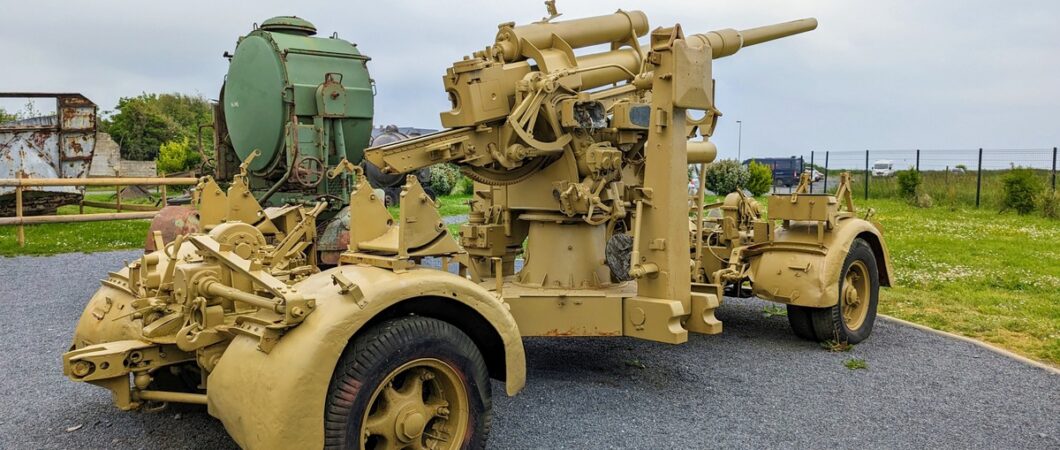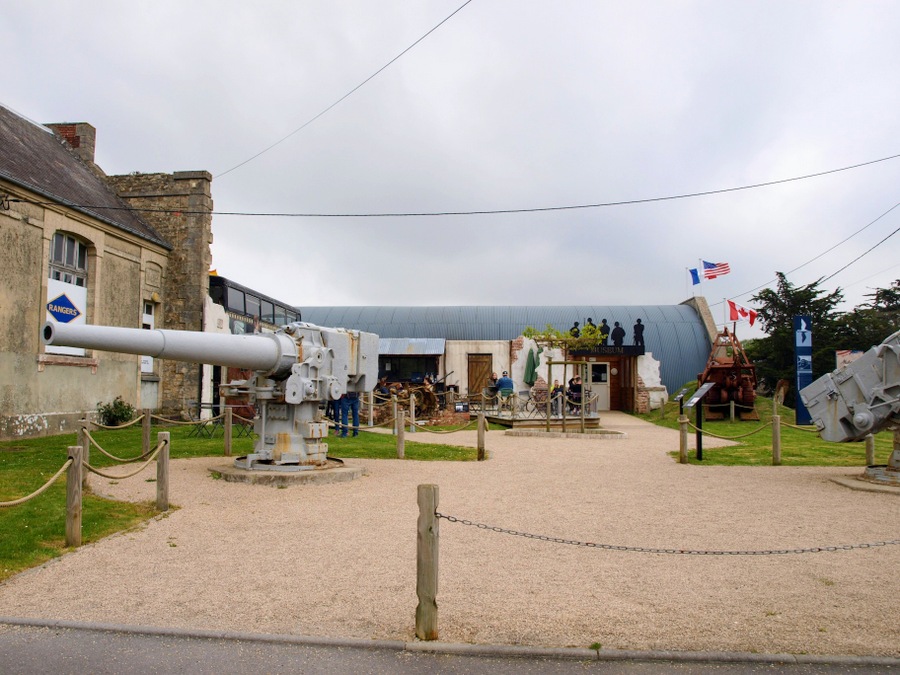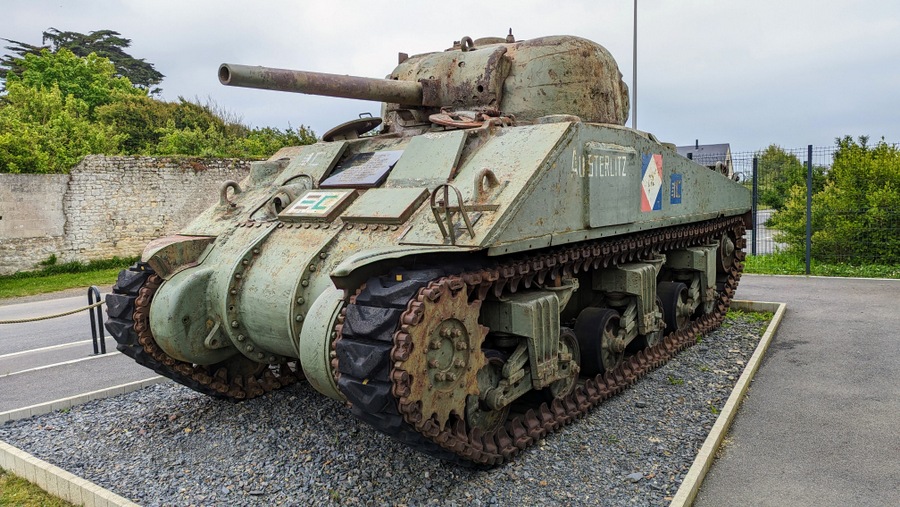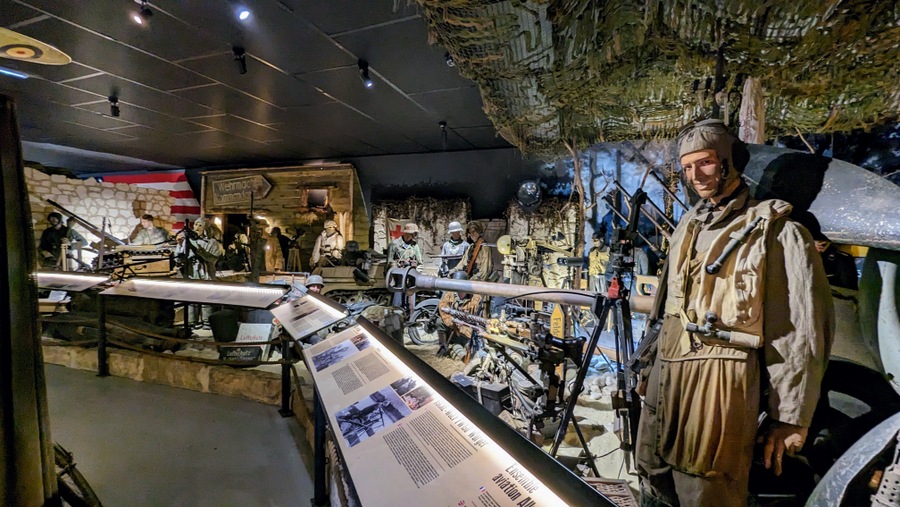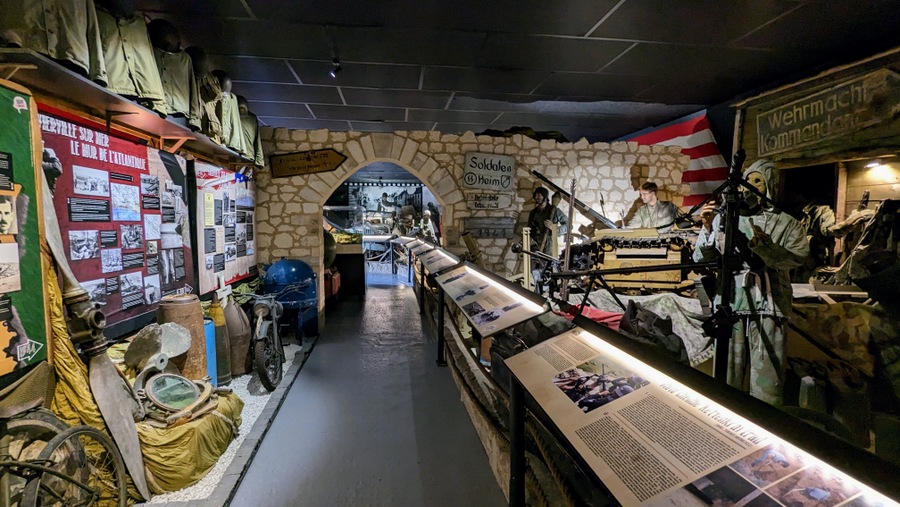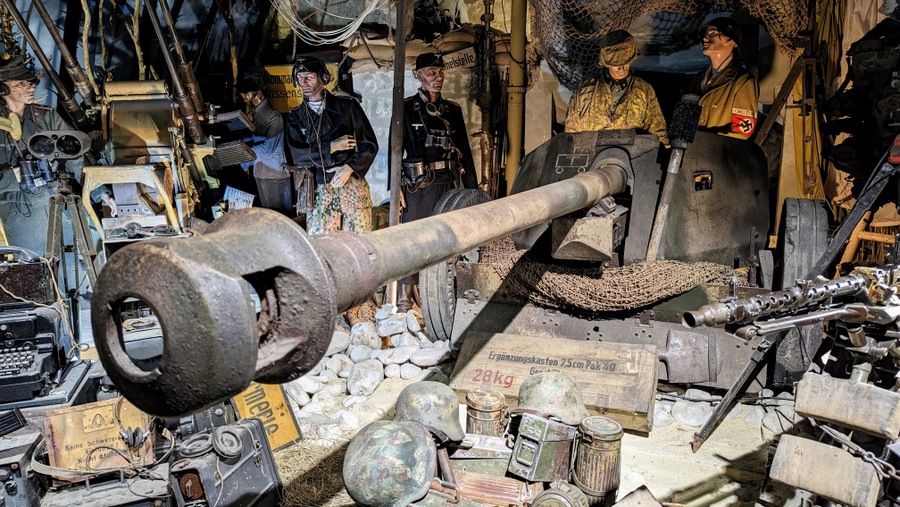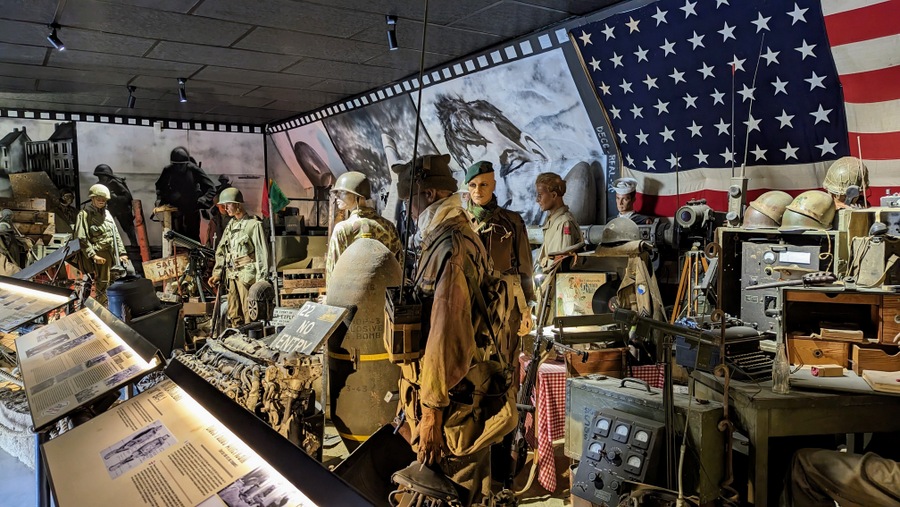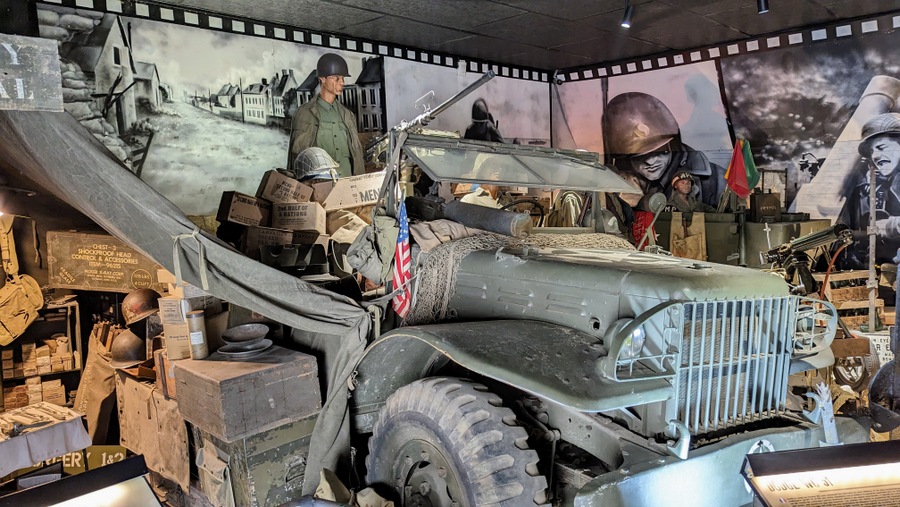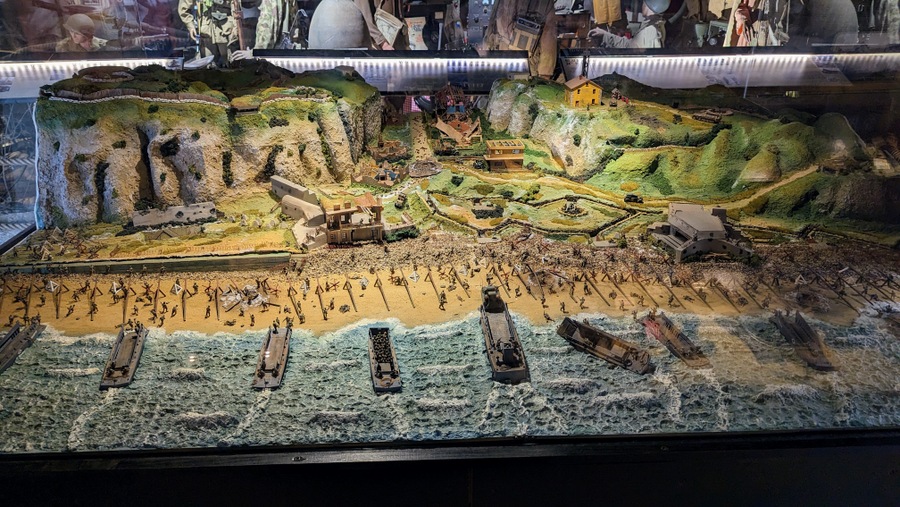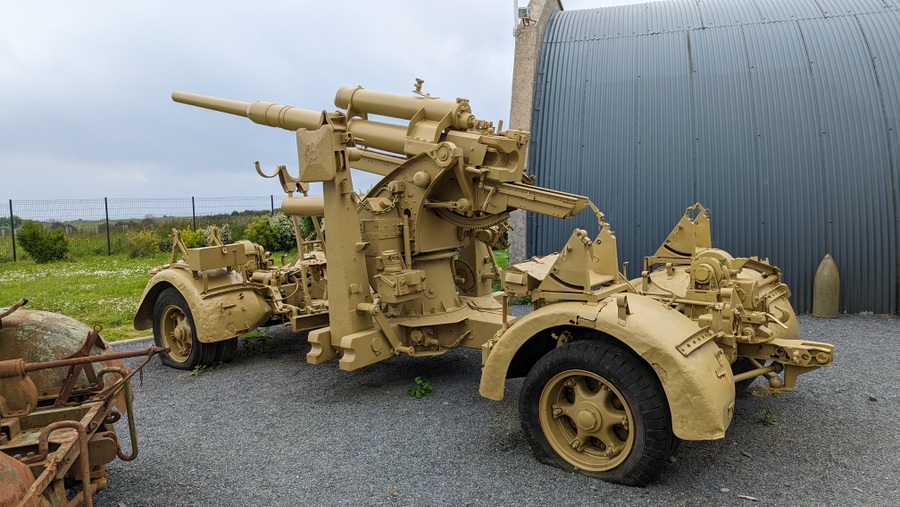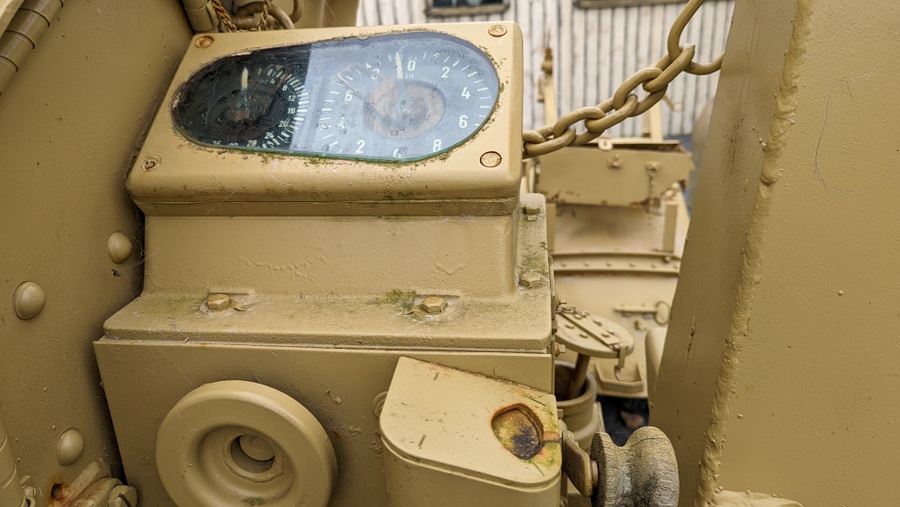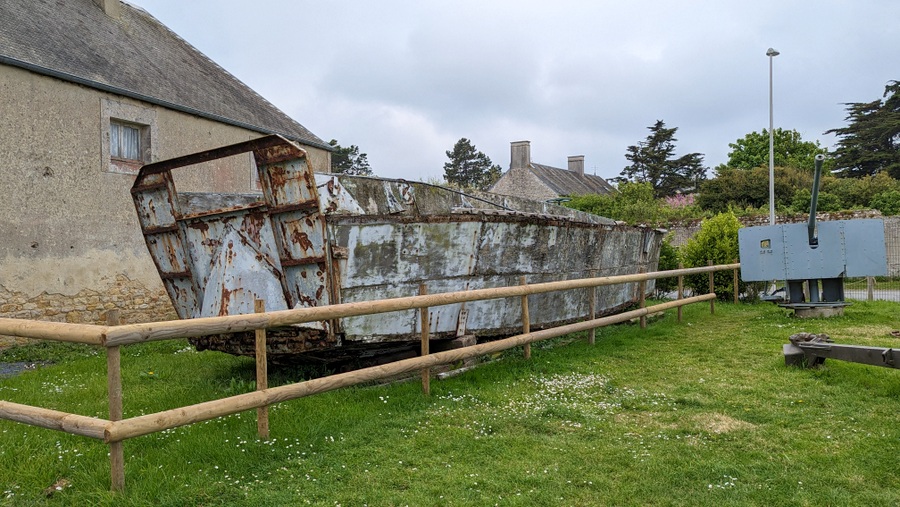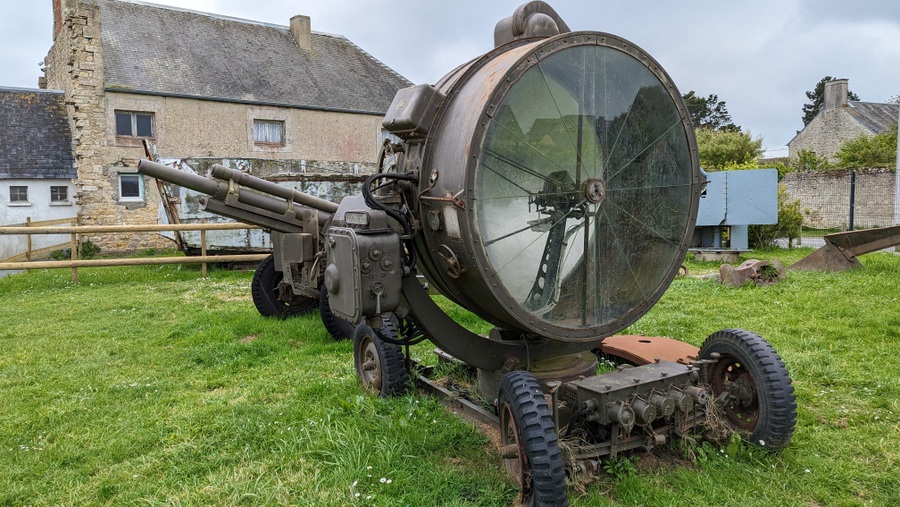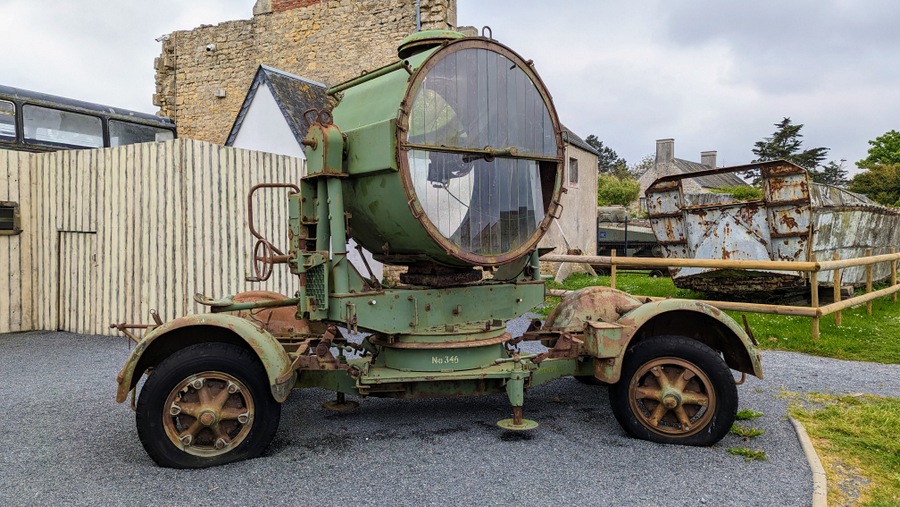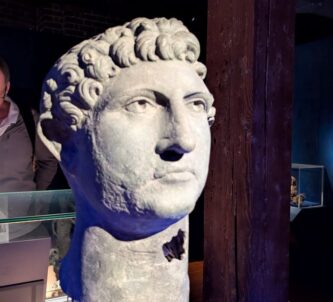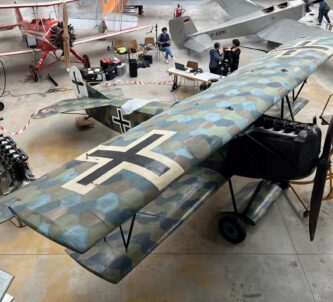The D-Day Omaha Museum is a small private museum packed with military items, uniforms and equipment that were gathered over a 50 year period by Michel Brissard, an enthusiastic military history collector who was born in 1945, the year WW2 ended. Now, the museum is run by his two sons.
The museum sits at the top of the Vierville draw from Omaha beach, by the side of the B514 coast road. So it’s easy to find as most visitors drive right past it (just like the Overlord and Big Red One museums down the road – also private collections) and it has some interesting items on the forecourt to draw people in, like the extraordinary armoured ‘cloche’ (bell) turret.
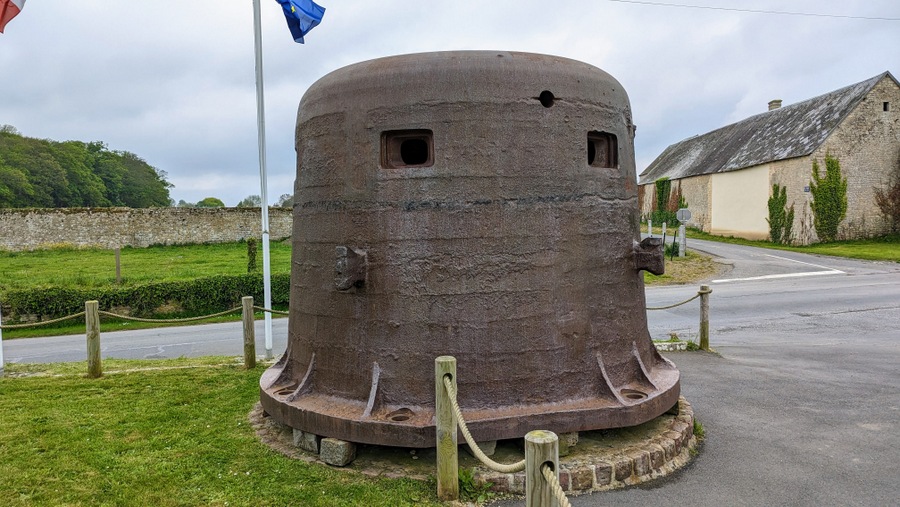
This was originally a cast iron gun turret on the Maginot Line. As with many French armaments after the fall of France in 1940, the Germans re-purposed it. The 60-tonne cloche was moved to Cherbourg where it was installed to defend the port. It gave the defenders a 360° observation post protected by around 250mm of armour, which certainly earned its keep. The other side of the cloche is peppered with the impact craters of shells that didn’t make it through… though I can’t imagine the effect on the occupants! They’d be wanting to take a few headache pills after a bombardment like that!
D-Day Normandy Posts
Nearby on the museum’s forecourt is a Sherman M4 A4 tank, and two 130mm naval guns from the French destroyer ‘Le Chacal’ which was sunk off Boulogne in May 1940. A third from Chacal can be seen in one of the gun pits at Crisbecq battery north of Utah Beach, although it wasn’t at Crisbecq in 1944 because the Chacal’s guns weren’t salvaged until the 1970s.
The other notable exhibit outside on the museum forecourt, that I bet most people don’t take much notice of, is a rusty US Army Caterpillar D4 bulldozer.
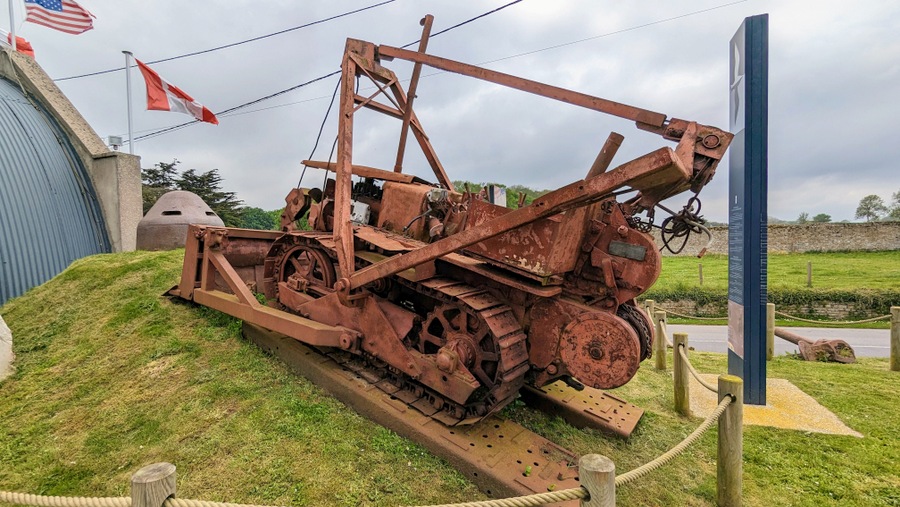
These machines were so important to Allied engineers and were in continuous use all over Normandy during the campaign, clearing obstacles, building defences and airfields. Many wound up after the war working on farms, quarries, woodlands and other sites, so it’s amazing there aren’t more now on display in museums. The D4 model is a small bulldozer. There is an example of the larger D7 model in the Memorial Museum of the Battle of Normandy in Bayeux.
Inside the Museum
Inside the museum, the spaces are busy with equipment, uniforms, small arms, larger guns, such as the German PAK 40 anti tank gun, and small vehicles such as a DKW RT125 motorcycle, and a Dodge WC51 – a sort of large Jeep.
Things that stood out for me: a US Army field hospital tent with its drugs and equipment; a Russian PTRS-41 anti-tank rifle (not much use against anything but the thinnest early-war armour, but captured in large numbers by the Germans on the Eastern Front and handily redeployed to the Atlantic Wall); a German flamethrower (Flammenwerfer 41) which I don’t think I’ve seen before; and not to be missed, an excellent 3d model of the D-Day assault on the Vierville Draw (Charlie & Dog Green) that really shows the German defences and how difficult they were to assault.
Outside the Museum
Outside at the back of the museum are some larger pieces of equipment. Being exposed to the elements, they have been suffering a certain amount of corrosion. When I visited there was no signage out here, but one of the Brissard brothers tells me they have plans for expansion and renovation of these items.
Some things, like the German 88mm flak gun and the Higgins landing craft are easily recognisable, but I struggled with the other items. So here is your chance to identify some of this stuff. I’ll put my ‘best guess’ in the captions. You let me know how badly wrong I am in the comments!
Note: Many of the exhibits outside and on the forecourt get moved around from time to time, so might not be there when you visit.
The Whale Bridges
It’s not immediately obvious that they have anything to do with the museum, but it was Michel Brissard, who collected the five sections of Whale bridge from the Mulberry A artificial harbour, and had them placed down the side of the Vierville draw road.
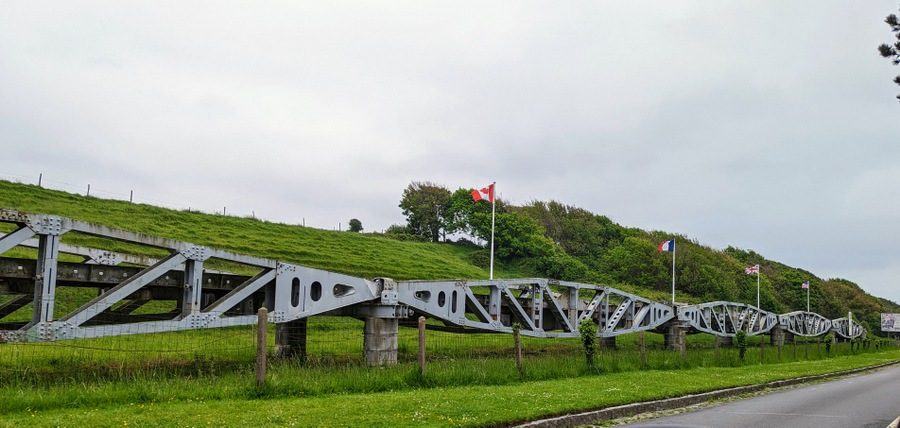
You can see them as you drive down to the beach.
Declaration: I was on a self-driving research trip for our guidebook, accredited by the Normandie and Calvados tourist offices. Museum entry was complementary.
Factbox
Website:
D-Day Omaha Museum
Getting there: D-Day Museum
Route de Grandcamp
14710 Vierville-sur-Mer
France
Hard to miss! When you drive along the B514 coast road look out for the armoured bell.
Entry Price (2024):
| Standard | Concession (Student, Military) | |
|---|---|---|
| Adult | € 7.00 | € 5.50 |
| Child (8-15) | € 4.00 | |
| Groups (8+ adults) | € 4.50 | |
| Child under 8, WW2 Veteran* | € 4.50 |
* Not many of them left!
Opening Hours (2024):
| April, May, September | Daily 10:30 – 18:00 |
| Feb, Nov, Dec | Daily 10:00 – 12:30 & 13:30 – 17:00 Daily (Except 29th Feb; 24, 25 & 31 Dec) |
| June, July, August | Daily 10:00 – 19:00 |
| October, November | Subject to demand |

